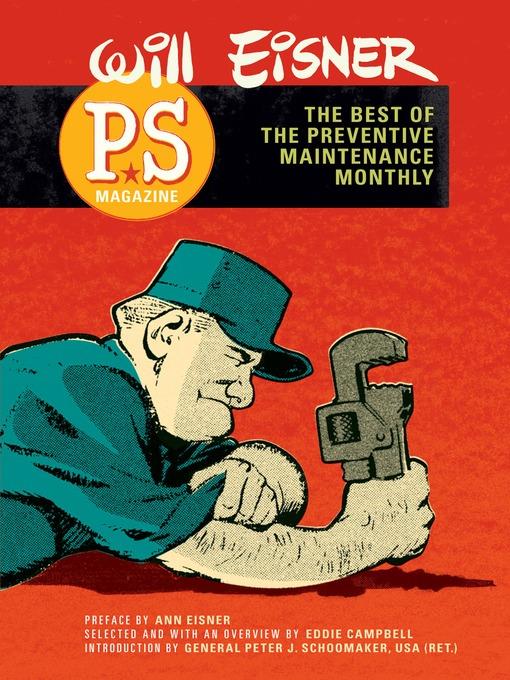
PS Magazine
The Best of The Preventive Maintenance Monthly
کتاب های مرتبط
- اطلاعات
- نقد و بررسی
- دیدگاه کاربران
نقد و بررسی

Starred review from September 19, 2011
For the first time, Will Eisner’s superlative work for the U.S. Army has been assembled into a single collection. The result shows the artist’s keen understanding of the educative power of graphic storytelling. From 1951 to 1971, between The Spirit and A Contract with God, Eisner produced PS Magazine for the army in order to teach the common soldier how best to use, maintain, repair, and requisition their equipment. From explaining how to load a truck correctly to why it won’t start, Eisner used a combination of humor, sound technical writing, and graphic storytelling to educate the soldiers. His magazines could be found at the front lines, in the officer’s mess, and in the quarters of senior military officials. It featured a cast of recurring characters like the loveable Joe Dope and the voluptuous Connie Rodd, who headlined featured segments like “Joe’s Dope Sheet” and the provocatively named “Connie Rodd’s Briefs.” With Eisner’s wonderful artwork and clarity of style making sometimes difficult concepts easy to understand, it’s no wonder PS Magazine was so popular with military personnel. A fascinating document for both fans of Eisner and military history buffs.

September 15, 2011
GI Joe is swearing at his all-too stationary truck: "I called them jokers for new batteries two hours ago...and it's darker out here'n four inches up a bull's nostril! HALP...." The great Eisner helped pioneer comics as an armed services teaching tool and drew GI training manuals during World War II. In the early 1950s, he helped the U.S. Army launch PS Magazine, about safe use and maintenance of vehicles and material. Recurring characters Joe Dope, Sargeant Haft-Mast, and Connie Rodd (the curvaceous mechanic) allowed him to work in lighthearted vignettes of instruction and precaution. Eddie Campbell selected from 20 years of issues and includes an introduction about how Eisner adapted the leaden prose of professional military writers into snappy text plus visuals and then had to run a gauntlet of army red tape to secure approvals. VERDICT While the technical details are dated and Eisner's style is sometimes overly goofy by modern standards, he created comics that still make you want to read them. An instructional model for today's producers of nonfiction comics, which too often lack such visual traction, this also has appeal for military buffs, vehicle junkies, and Eisner fans.--M.C.
Copyright 2011 Library Journal, LLC Used with permission.

October 15, 2011
In the two decades between ending his groundbreaking newspaper comic, The Spirit, in 1952 and turning in the 1970s to the graphic novels that would solidify his lofty reputation as one of the medium's premier innovators, legendary cartoonist Eisner devoted most of his efforts to producing a monthly, digest-sized magazine for the U.S. Army that used comics to teach GIs basic maintenance tasks. Long a believer in the medium's effectiveness as an educational tool, Eisner clearly and vividly demonstrated how to perform jobs like starting a stalled engine or properly tightening bolts through humorous strips featuring such characters as Private Joe Dope and gorgeous gal mechanic Connie Rodd. Although they necessarily lack the drama of his slick Spirit tales or the in-depth approach of his later graphic novels, like A Contract with God (1978), these amusing yet pragmatic sketches provide a missing-link comics document for fans and demonstrate the same mastery of his craft that marked Eisner's better-known works.(Reprinted with permission of Booklist, copyright 2011, American Library Association.)

























دیدگاه کاربران